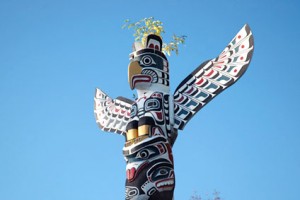
Given that I am an international student, I haven’t had the chance to do lots of reaserch regarding First Nations people. However, I got the opportunity to get to know some of the culture pretty well. I lived in Vancouver for a few months in 2013, where in autumn I was fortuante enough to attend a UBC exhibition regarding the First Nations people. It was an awesome experience for me. I learned a lot, and even had the pleasure to speak with some of them. They presented stories about their lives, and we watched a movie called ” Where the Spirit Lives”. To anyone wanting to learn more regarding First Nations people, I strongly recommend watching this movie.
From the political view, long ago, governments literally were trying to bring down the aboriginal culture. Thankfully, they recently apologized for the mistakes. “Historically, the Canadian government has catered to aboriginals only when it needed them. It needs them now” by Thomas Walkom. Aboriginal Affairs and Northern Development Canada (AAND) provides funds for almost all the social programs and services for the Aboriginal population. They even have lower tuition fees for education.
I think that the aboriginals affect the economy of Canada. The government invests a lot of money in Aboriginal Education. Educational levels among First nations are rapidly growing. More and more people are getting involved with jobs. Income for aboriginals and non-aboriginal are slightly different, $14,198 compared to $20,264 respectively.
There is a significant difference between Aboriginal and non-Aboriginal Canadians in terms of the lifestyle factors, demographic employment, education and income. As stated “Life expectancy for registered Indians at birth is increasing and will continue to increase” However, most of the aboriginal population still suffers from disadvantages in comparison to the non-aboriginal population.
